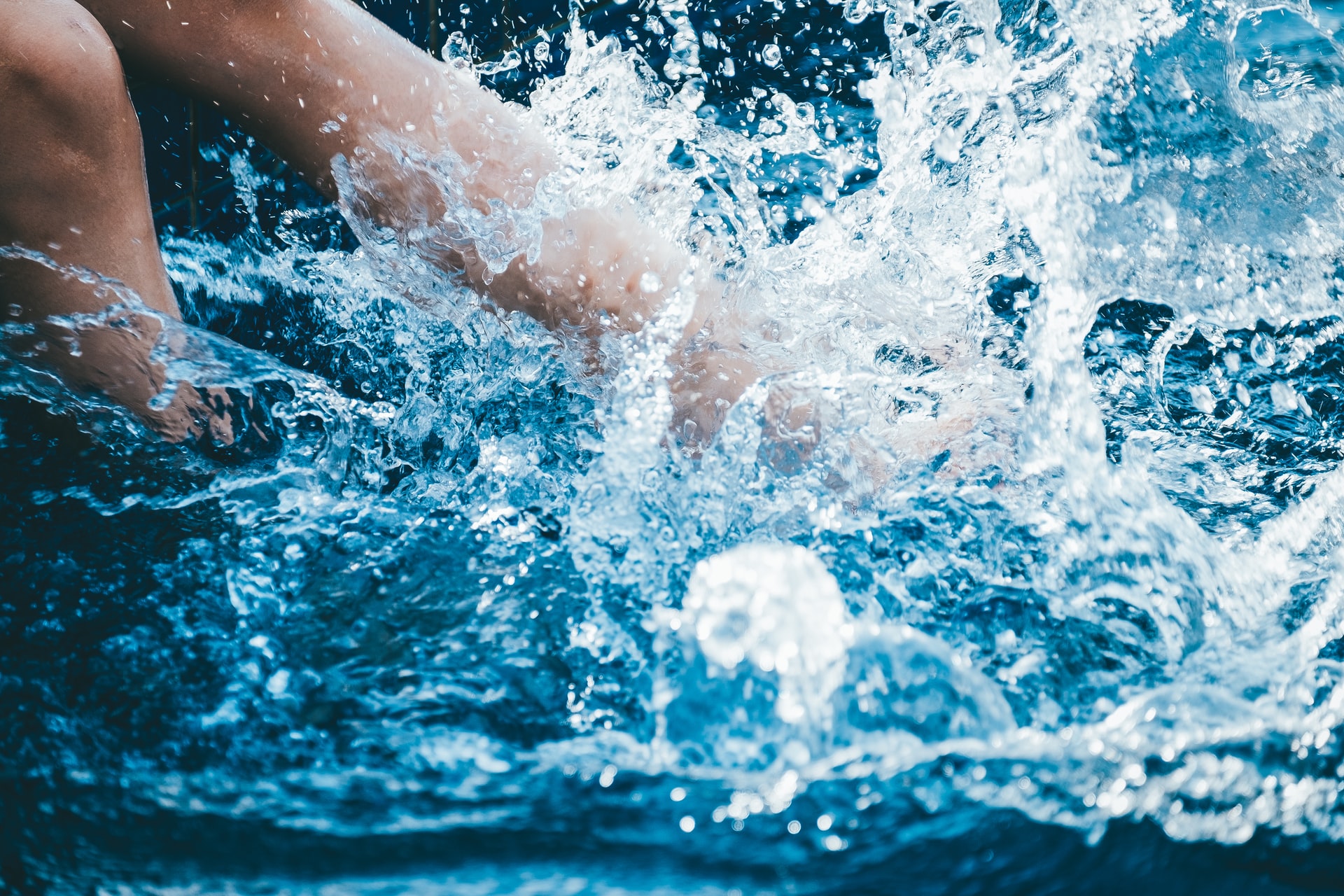Water Sustainability – the science and technology dividend

By Dhesigen Naidoo, CEO of Water Research Commission (WRC)
“Water security has been a human occupation since the beginning of time. In fact our transition from a nomadic species to settlement was only possible for Homo Sapiens when our ancestors developed an ability to access and store water to enable year round habitation in one place. This gave confidence to invest in agriculture and the rest, as they say, is history. And yet, all these millennia later water security continues to be elusive. We have just been through a prolonged drought episode, on the back of climate change, with parts of the country continuing to experience extreme water scarcity. The Global Risk Register of the World Economic Forum has had water security through the notion of ‘water crisis’ as one of the top five risks to the global economy for nine years in a row.
An unprecedented global pandemic
We add to this the fact that we are experiencing an unprecedented global pandemic. This Nouvelle Coronavirus, SARS-CoV-2, or COVID 19, has rapidly overwhelmed the global agenda. And water has taken centre-stage in the containment of infections strategy all over the world as we try to flatten the infection curve. All the protocols indicate that regular washing and personal hygiene is a key line of defense against the spread of the virus. And as a consequence, hand-washing campaigns have become the highest priority in national interventions. This crisis has put a magnifying glass on the issues of water security and safe sanitation access.
All of the scorecards associated with the Sustainable Development Goal for water and sanitation indicate that progress is not as rapid as we had hoped. And once again, world-wide, but mainly in the Global South, we are still well off target. Even countries with enviable access track records, like South Africa, are found wanting in terms of the last mile of interventions to get to the goal of universal access and sustainability of the interventions already implemented. With personal and collective hygiene being the cornerstone of the containment strategy – access to safe water, hygienic sanitation services and reliable wastewater treatment become paramount.
It emphasizes once again the modern day paradox. Never before have we had access to so much scientific knowledge. The water science community of practice has been hard at work consistently increasing the rate of scientific publications in this domain at a rate of thirty percent a year for the past twenty years. We have the scientific know-how to engage the principle challenges throughout the water and sanitation value chains. And yet the primary obstacle continues to be the fact that the water sector is suffering from pathological conservatism. This sector continuously tries to solve 21st century problems with 20th century technologies and 19th century operating rules.
A sluggish global and local economy
Add to this COVID 19 with the important risks associated with this pandemic, and exacerbated by a sluggish global and local economy, is the almost inevitable decreasing of the momentum in the achieving of many development targets including the Sustainable Development Goals. There is a high probability that the SDG 6 targets for water and sanitation, will have to be beyond 2030. This together with the concomitant slowing down of the other SDGs means a delaying of the global development agenda to at least ensure the end of global hunger and universal access to the basic services that South Africa deems basic human rights.
But, with brave choices and a courageous strategy we have the opportunity to do exactly the opposite. We can, in fact, accelerate our efforts toward the SDGs in the medium term, and be firmly on the pathway to sustainable development and a lower carbon economy in the long term. The catalyst will be the mainstreaming of revolutionary and innovative water and sanitation management. The technology toolbox is deep and promising. We have better water augmentation options with smarter water harvesting systems that are integrated for economies of scale. Advances in materials technology ensure tank linings that are safer and better oriented to deal with water storage quality risks. Advanced manufacturing means that new tanks make for better building fit both functionally and aesthetically.
The 4IR suite of tools mean that water management can finally enter the 21st century. A combination of remote sensing, earth observation and digitalisation means better and more accurate detection of groundwater. The remote sensing suite combined with the internet of things and big data management will organize for pragmatic and empowering real time management of the water system. From monitoring of crop water use to the digital management of wastewater treatment plants to leaks detection and repair. From the monitoring of the integrity of pipes to ensure on time maintenance to prevent major breaks and downtime, to intelligent pressure management. Smart meters and intelligent billing will also enable demand management in the hands of the consumer for better efficiencies and higher water security.
The Brown revolution and the Sanitation Transformation Initiative or SaniTITM is our best option to achieve and sustain the SDG6 goal of universal access to safe and dignified sanitation. Innovative toilet systems that are either dry or low flush catalyzed by the Bill and Melinda Gates Reinvent the Toilet Programme, and the smart research and innovation investments by the Water Research Commission, will eventually become the mainstream toilet solution for all. The real innovation that will accelerate the both rollout of sanitation to all, as well industrialize the sector, lies at the back end. Non-sewered sanitation is a technology platform whose time has come. It immediately deals with water and energy limitations as a conventional high cost water borne sewerage system will no longer be required in favour of local decentralized waste treatment. And the attractive prospect of beneficiation of the waste into high value products that will seed businesses and industrial platforms.
The foundation for the achievement of sustainability lies in the adoption of the Water Sensitive Design approach in planning new settlements from rural towns to large cities. Core to the ideology is water self-sufficiency. Implementation of the full suite of water harvesting, water demand management and recycling measures means that the urban environment draws less water out of the catchment. Through the installation of local wastewater treatment works and artificially wetlands, the quality of water leaving the town should be as good or even better to what was abstracted in the first place. The possibility is high for both higher levels of water security with respect to both quantity and quality. If we add to the mix renewable energy dominance and general waste recycling the ecological footprints of towns and cities will be dramatically reduced with big pluses for the environment and the sustainable development agenda.
Strategies to deal with unsafe water and poor sanitation
But we are in the midst of a global emergency. This is the moment when all around the world countries are investing in strategies to deal with unsafe water and poor sanitation, the key COVID risk factors. Clean water and safe sanitation and wastewater treatment are core to the containment strategy. This is enjoying political attention in the public sector and huge focus in the private sector as we brace ourselves to deal with this crisis. This is therefore the right time to engage in catalytic actions to leap-frog the current situation toward achieving universal access to safe water and sanitation with concomitant, smarter, eco-friendly waste and wastewater treatment. This should be complemented by the industrialization of the beneficiation of waste and wastewater to produce fertilizers, energy, high value chemicals, lipids and proteins. These actions will prove transformative – economically, socially and environmentally.
There are some critical success factors. Firstly, we have to heighten our efforts to translate the vast repository of scientific and technological knowledge in this domain to tangible products and services for immediate use on the ground. There will have to be substantive support to product and business development and an overhaul of our archaic regulatory rules and operating procedures. Secondly, we need new economic models to effect large scale implementation and sustainable operations and maintenance. Thirdly, we need to bolster our partnerships between science and society, governments and business, local and international. Using these interventions the transformation of water and sanitation could catalyse our development trajectory into one of sustainable development. Now is the right moment to invest in this change.”


.svg)











